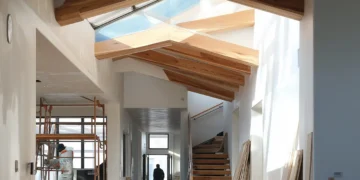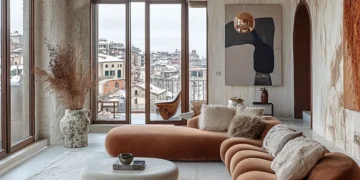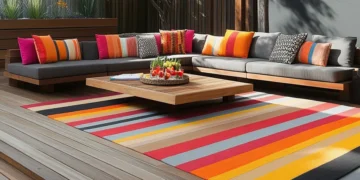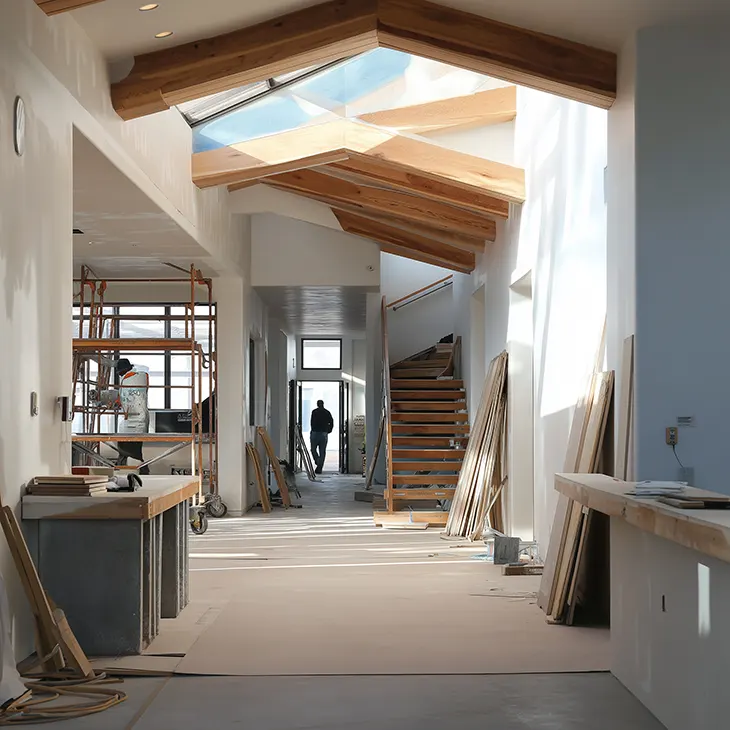
Ever look around your house and think, “It’s not falling apart, but it’s not really working either”? Cabinets stick. Outlets are in all the wrong places. The bathroom tile might have been stylish during the last recession. At some point, every homeowner hits a wall – not literally, although knocking one down might be part of the plan. In this blog, we will share how to take on renovations with a strategy that delivers both style and value.
Talking renovations basics, such as budgets, plannings, vendors and energy efficiency is DSCENE and ARCHISCENE Magazine Editor in Chief Zarko Davinic:
Work Backwards from the Finish Line
Before touching a wall or signing a contract, start with clarity. What’s the purpose of the renovation? If it’s to improve resale value, your decisions will lean more neutral and ROI-focused. If it’s about comfort or function, then you’ll prioritize layout and daily livability. Defining the “why” early shapes everything – from budget choices to design details.
For long-term success, think in layers. Structural integrity first. Systems second. Finishes last. It’s tempting to skip ahead to color palettes or tile samples, but if your windows leak or your electrical panel is outdated, all those surface upgrades are temporary distractions. Replacing inefficient or damaged windows, for example, should never be treated as an afterthought.
High-quality window replacements offer one of the highest returns in terms of both energy savings and comfort. With rising energy costs and tightening building codes, the market has grown significantly. Working with established window replacement companies helps ensure the install is done correctly, the materials match your region’s climate, and the investment adds long-term value. Reputable providers also understand how to navigate warranties, performance ratings, and compliance paperwork – things that can derail a project if left to guesswork.
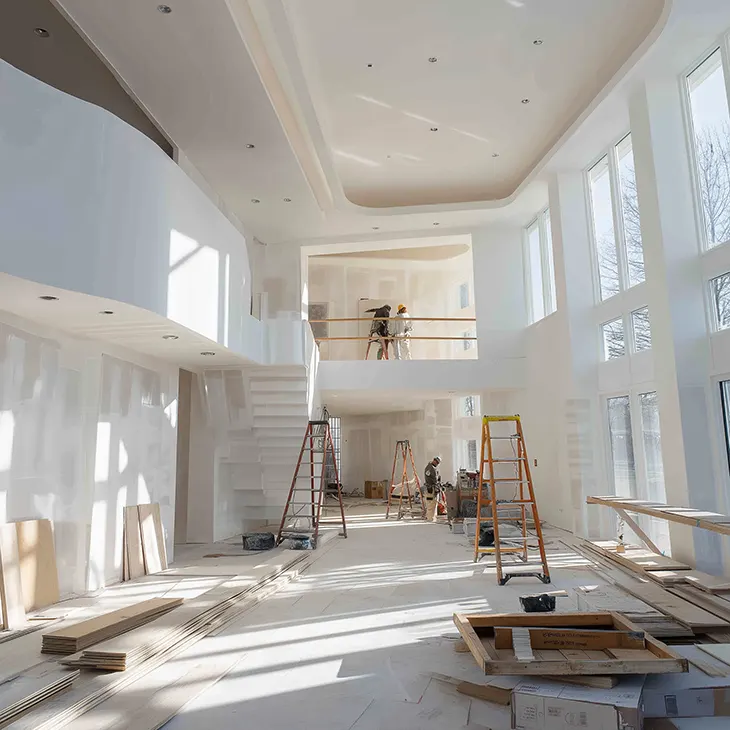
Beyond utility, modern window upgrades also contribute to design cohesion. The frame style, glass finish, and opening type influence how natural light enters your space and how the exterior reads from the street. Even in small remodels, those details can elevate the final result from passable to polished.
Budget with Brutal Honesty
The gap between what you want and what you can afford can sneak up fast. Most people underestimate both material and labor costs, then fail to account for surprise expenses such as structural issues behind walls, electrical panels that aren’t up to code, supply chain delays that force last-minute product changes. Build a detailed budget that separates must-haves from nice-to-haves. Allocate at least 15% for contingency, and if you don’t use it, you’ll feel like you won a small lottery. If you don’t include it, you’ll end up cutting corners halfway through the project.
Also recognize that not all square footage is equal. Bathrooms cost more per foot than bedrooms. Kitchens involve more trades such as plumbing, electrical, cabinetry, tile. Therefore, their price per foot can be double. Big rooms aren’t always big spenders, and small rooms aren’t always cheap.
Labor is another factor that’s changed. In many regions, demand for skilled contractors is still outpacing supply. That means rates are higher, schedules are tighter, and crews are pickier about which jobs they take. Good contractors won’t be the cheapest or the fastest—but they’re the ones who finish projects with the fewest headaches.
Know When to Phase the Work
If you can’t afford or manage a full-home renovation all at once, stagger the work in phases. But don’t just pick rooms at random. Phase based on systems and impact. Group together rooms that share plumbing lines. Combine flooring work across multiple spaces to minimize transitions. Every phase should end in a clean break, not a lingering to-do list. Don’t leave light fixtures half-swapped or drywall unfinished “until later.” These undone projects drain momentum and erode satisfaction. Even modest upgrades feel better when they’re fully complete.
If you’re renovating in a home you’re still living in, make livability part of your plan. Kitchen remodels need alternate cooking options. Bathroom overhauls require backup showers. Dust control, daily cleanup, and clear walkways protect not just your belongings but your sanity.
Vet Every Vendor Like a Job Interview
Don’t pick contractors or designers based on price alone. Ask questions about how they work. How do they manage delays? Who handles permits? What’s their communication style?
Check recent references, not just the prettiest projects in their portfolio, but jobs like yours. Ask how problems were handled. No project goes 100% according to plan. What matters is how the team reacts when that happens. Get everything in writing. Scope of work. Payment terms. Timeline. Don’t leave anything to assumption. If a contractor is vague or evasive during planning, that won’t improve once the project starts. Clarity is protection, for you and for them.
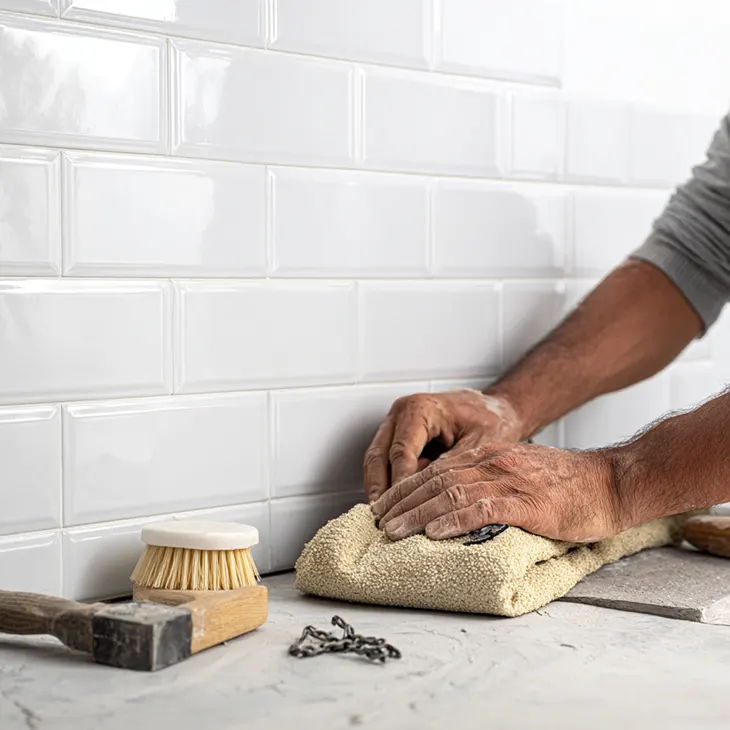
Lean Into Sustainability Without the Gimmicks
Energy efficiency and eco-conscious upgrades are more than buzzwords now. They’re becoming embedded in building codes, rebate programs, and real estate expectations. But sustainability doesn’t mean adding solar panels and calling it a day.
Better insulation, smart thermostats, energy-efficient appliances, and low-VOC paints all improve performance and health without sacrificing style. Sustainable doesn’t have to look crunchy or cost extra. It just has to be chosen intentionally. Recycled or reclaimed materials, flooring, tile, hardware, can add character while reducing environmental impact. If it lasts longer, needs less maintenance, or saves energy, it pays off in the long term whether you stay or sell.
Finish With the Details That Pull It Together
Trim, hardware, fixtures, and lighting controls are often treated as afterthoughts. But they’re the parts you touch and see every day. Swapping out builder-grade doorknobs or adding consistent baseboards across rooms can make even older homes feel cohesive.
Think about how light works in the space across the full day. Bright task lighting during the day. Warm dimmable lighting in the evening. Wall sconces, under-cabinet strips, or toe-kick lighting in kitchens and bathrooms all elevate a space without major investment. Storage also deserves fine-tuning. Drawers that close softly. Closets that have space for real life, not just hangers. Shelving that supports everyday use. These aren’t flashy features, but they’re the ones that turn renovations from “nice” into “smart.”
